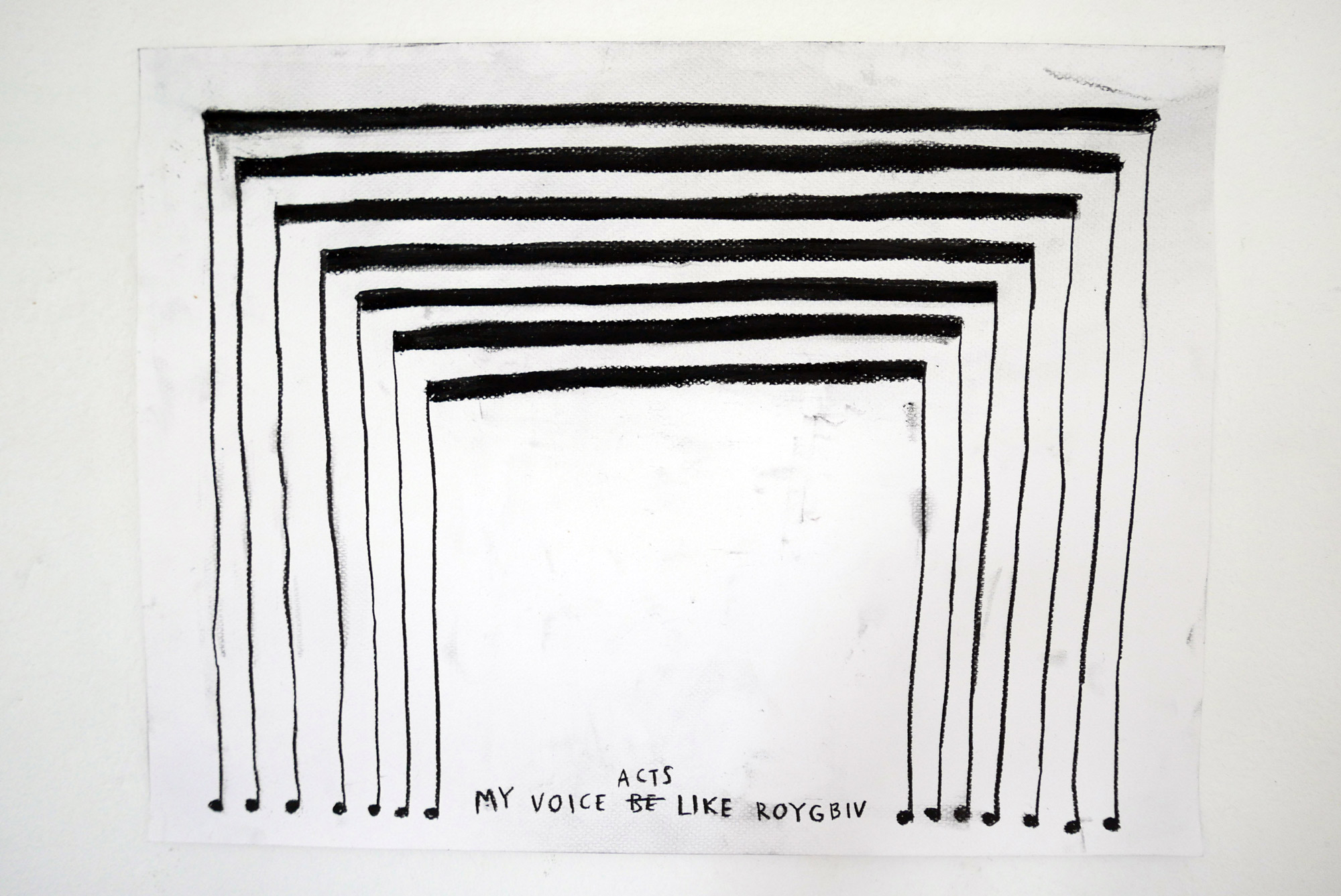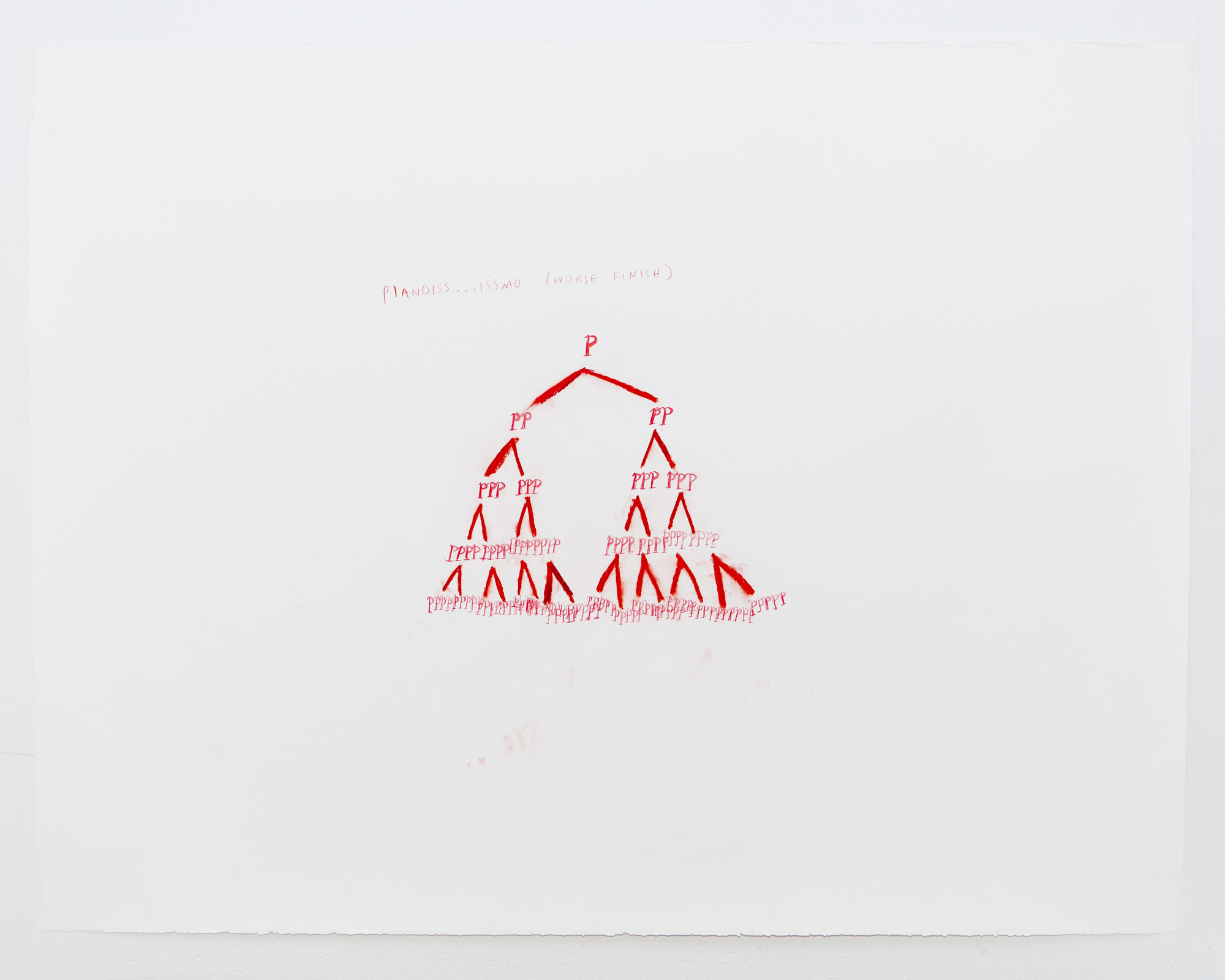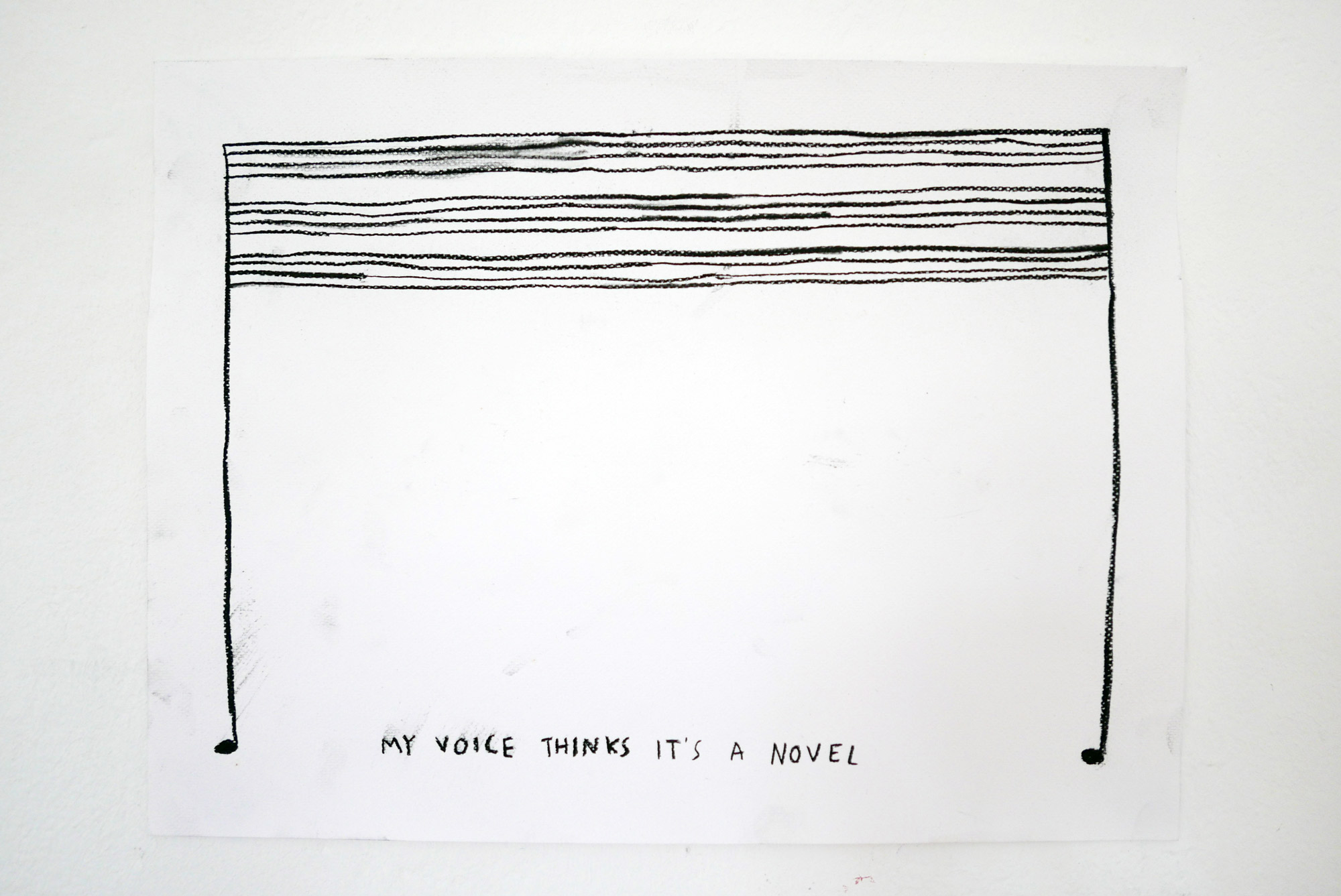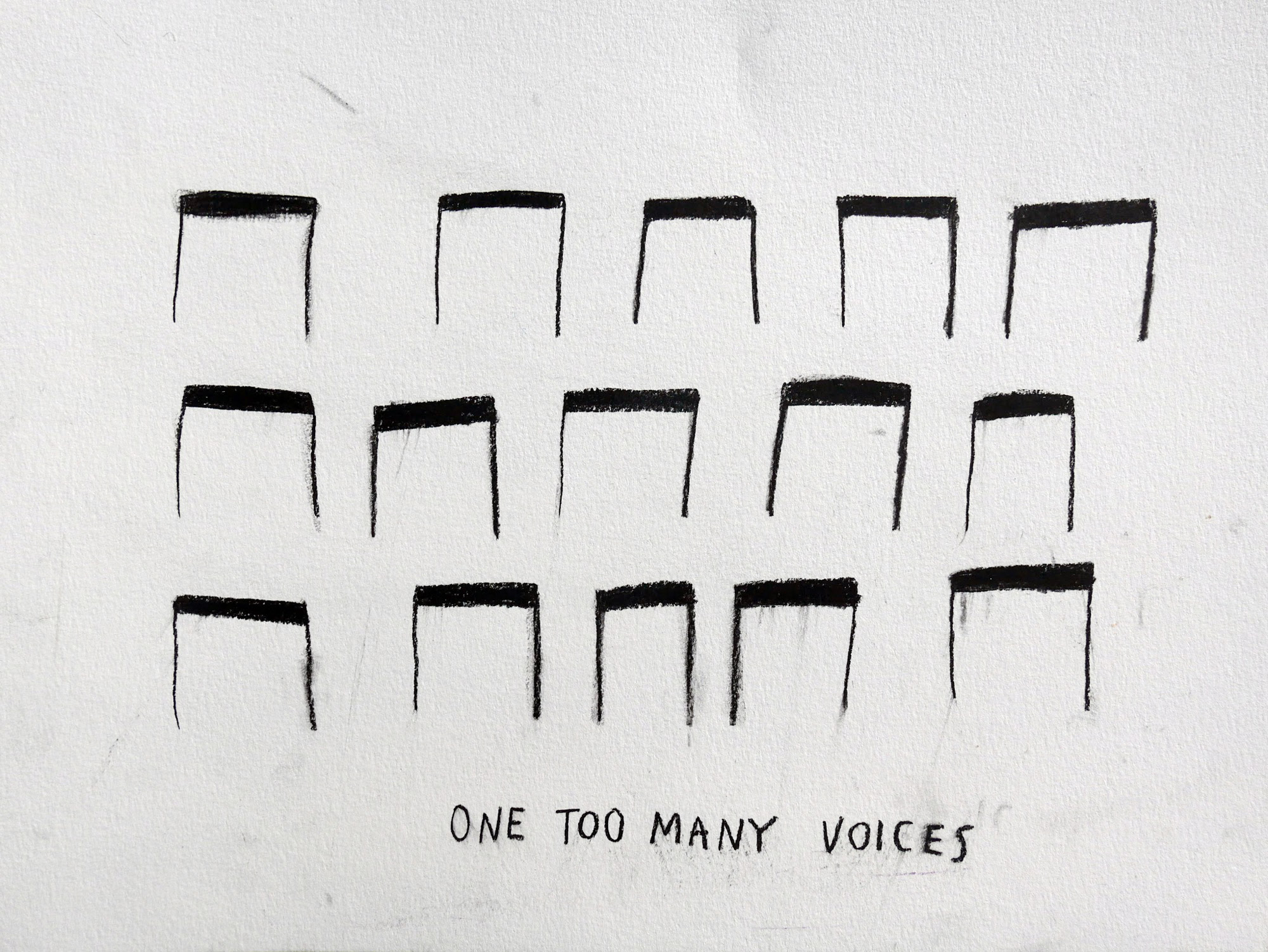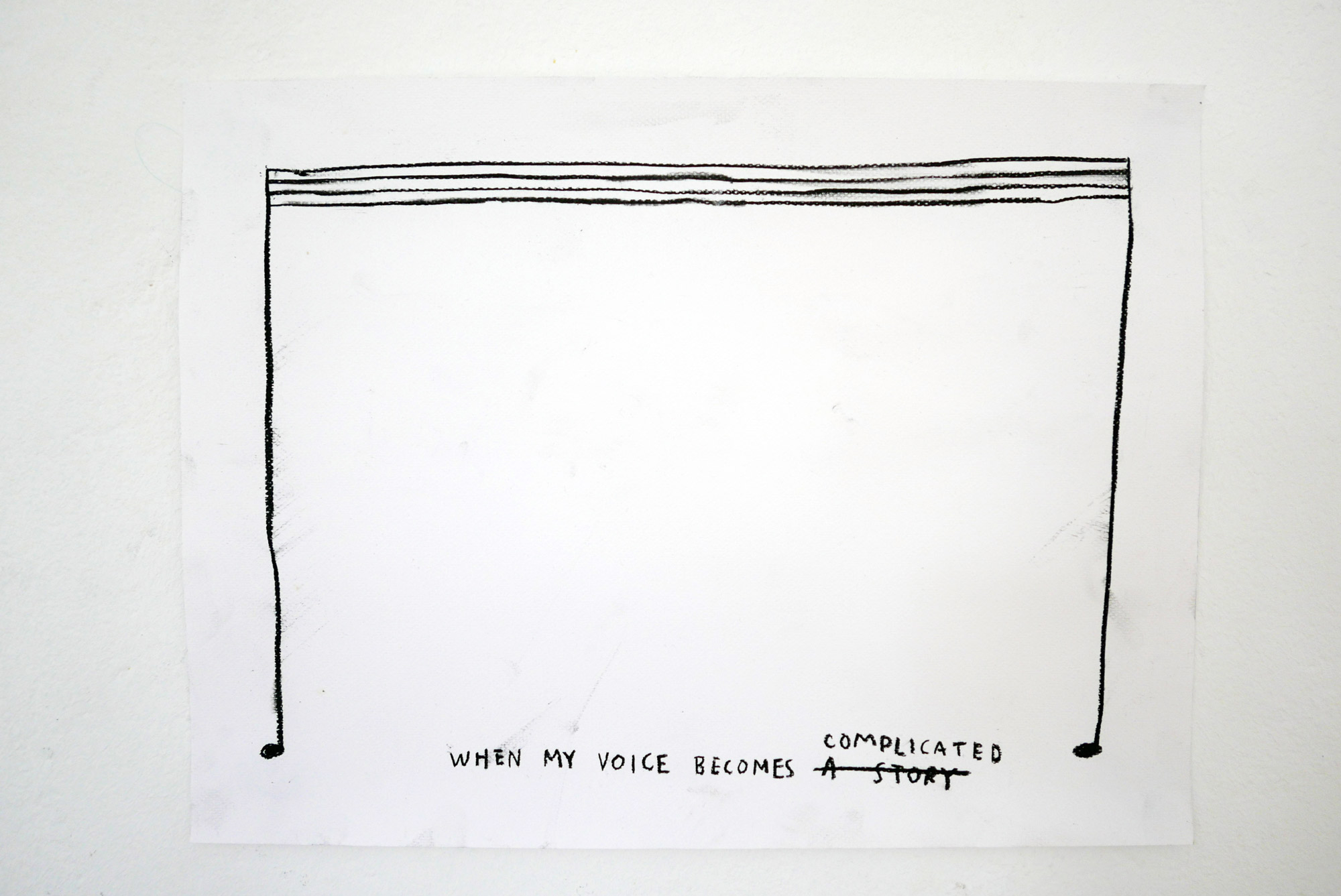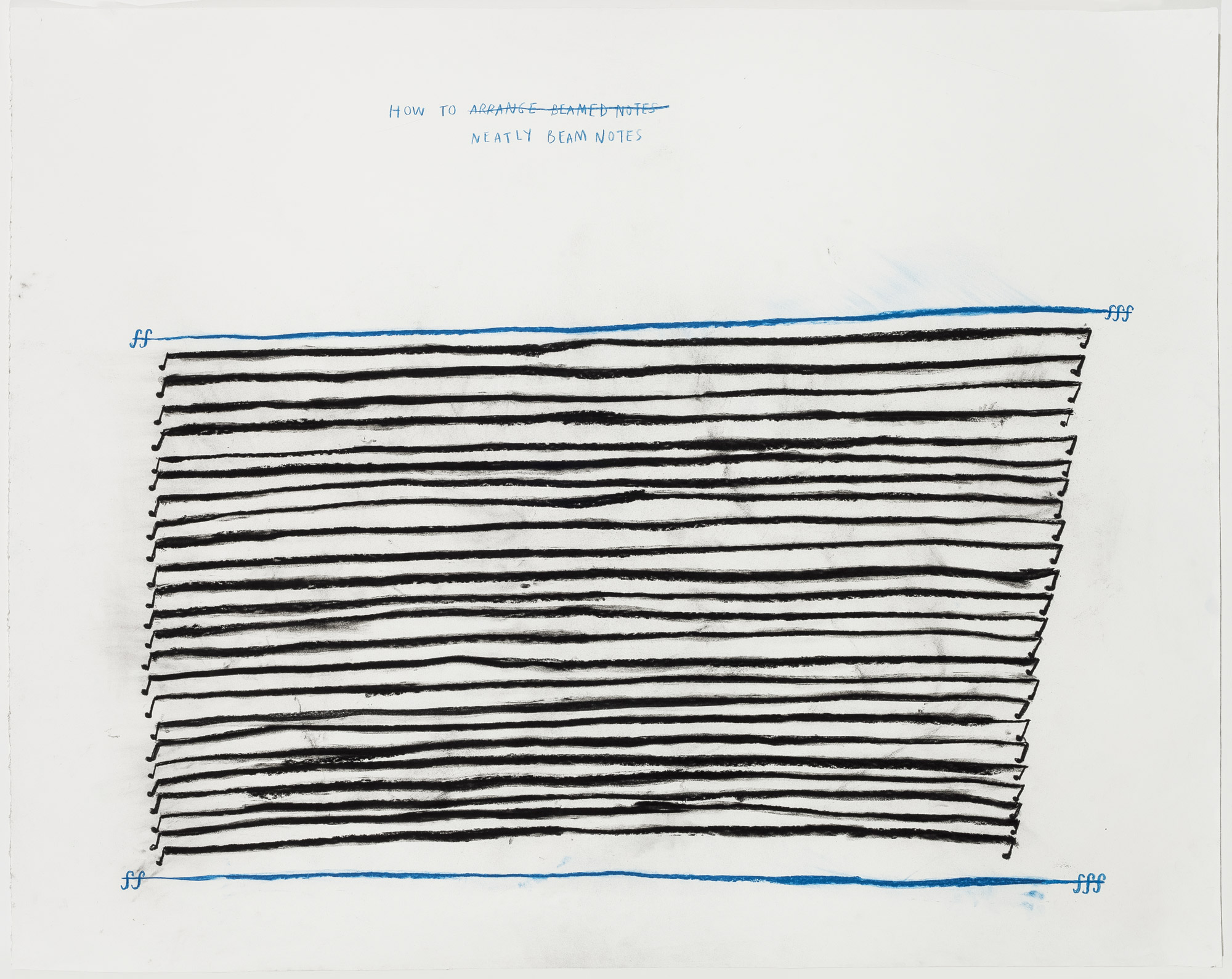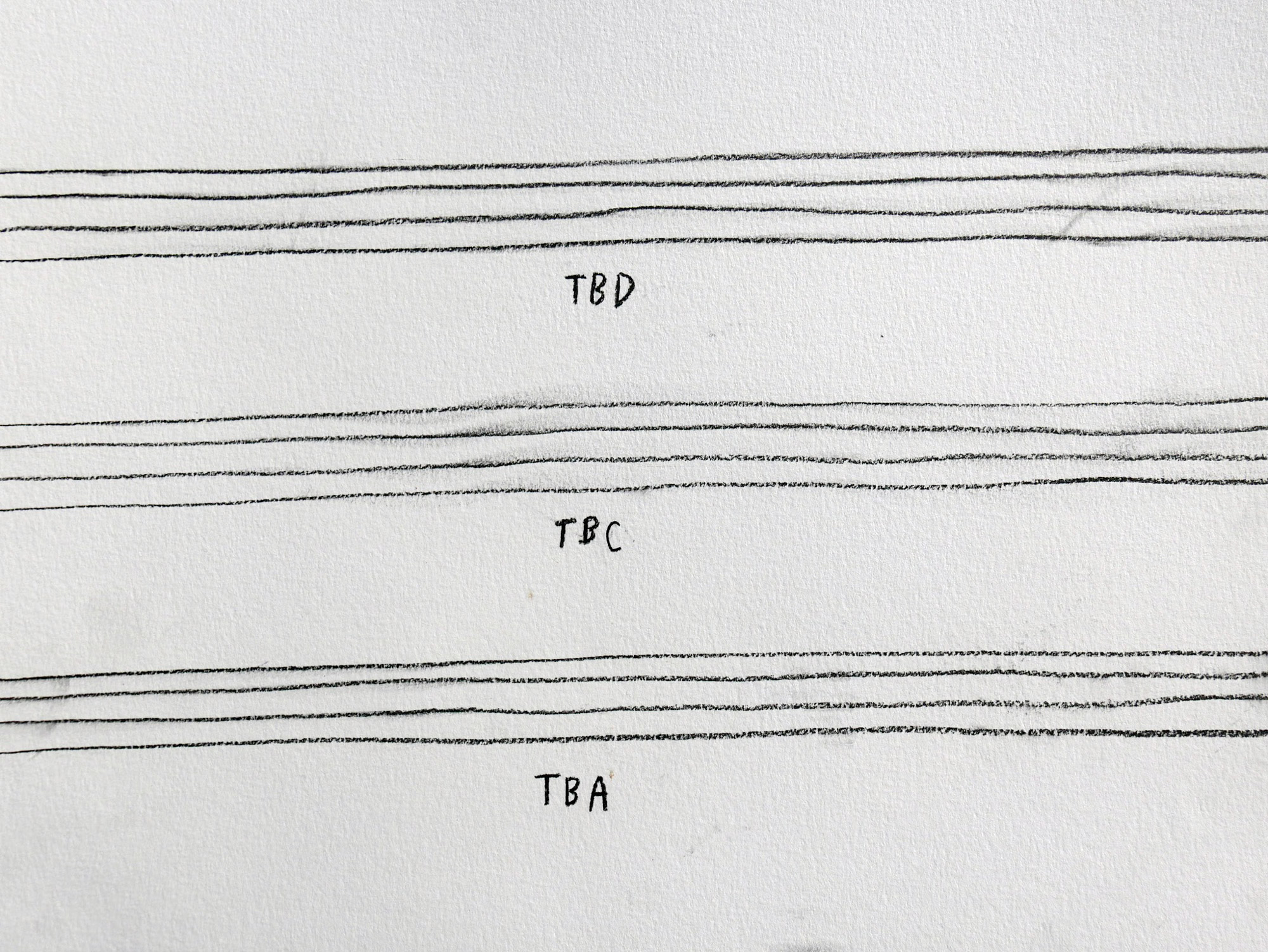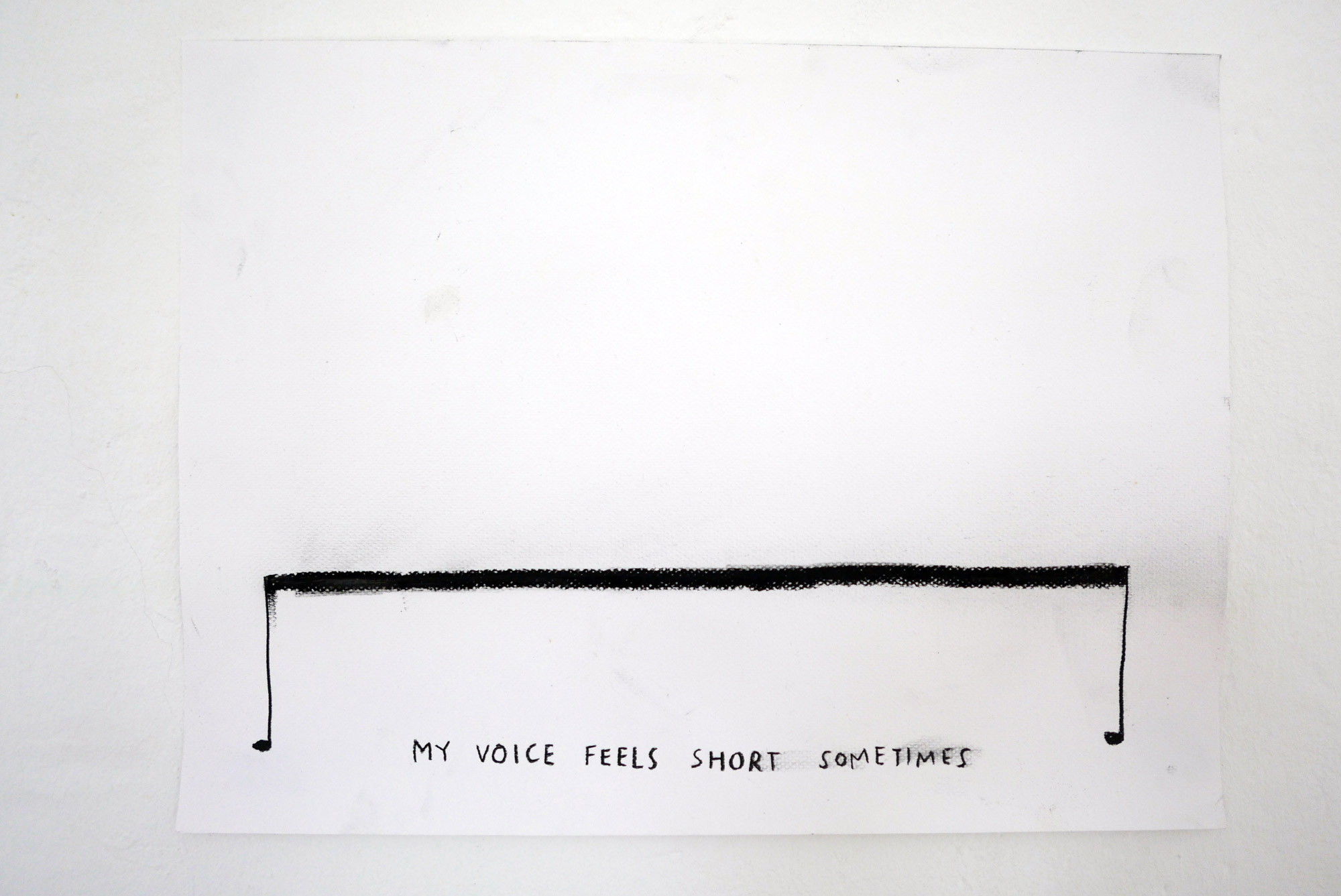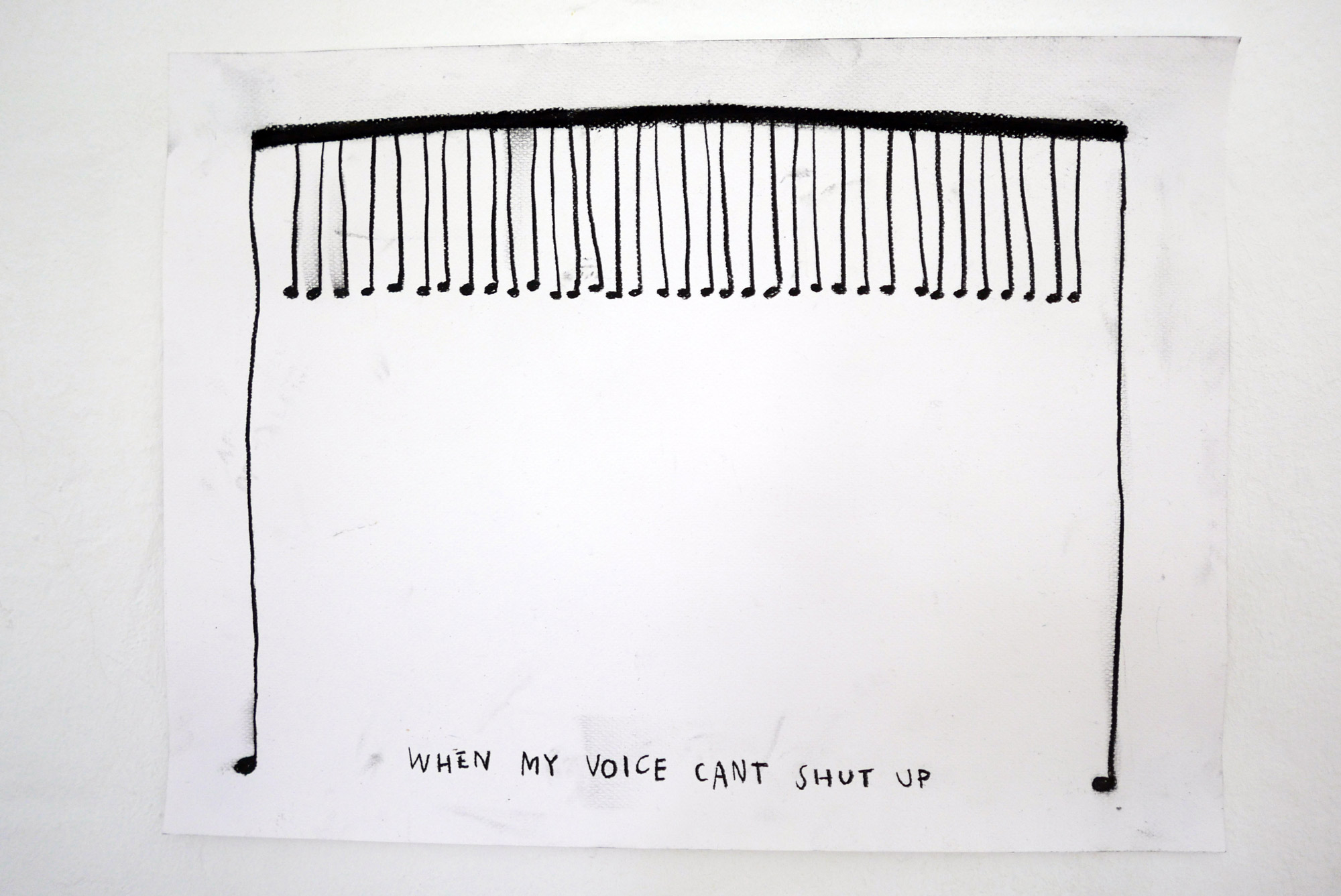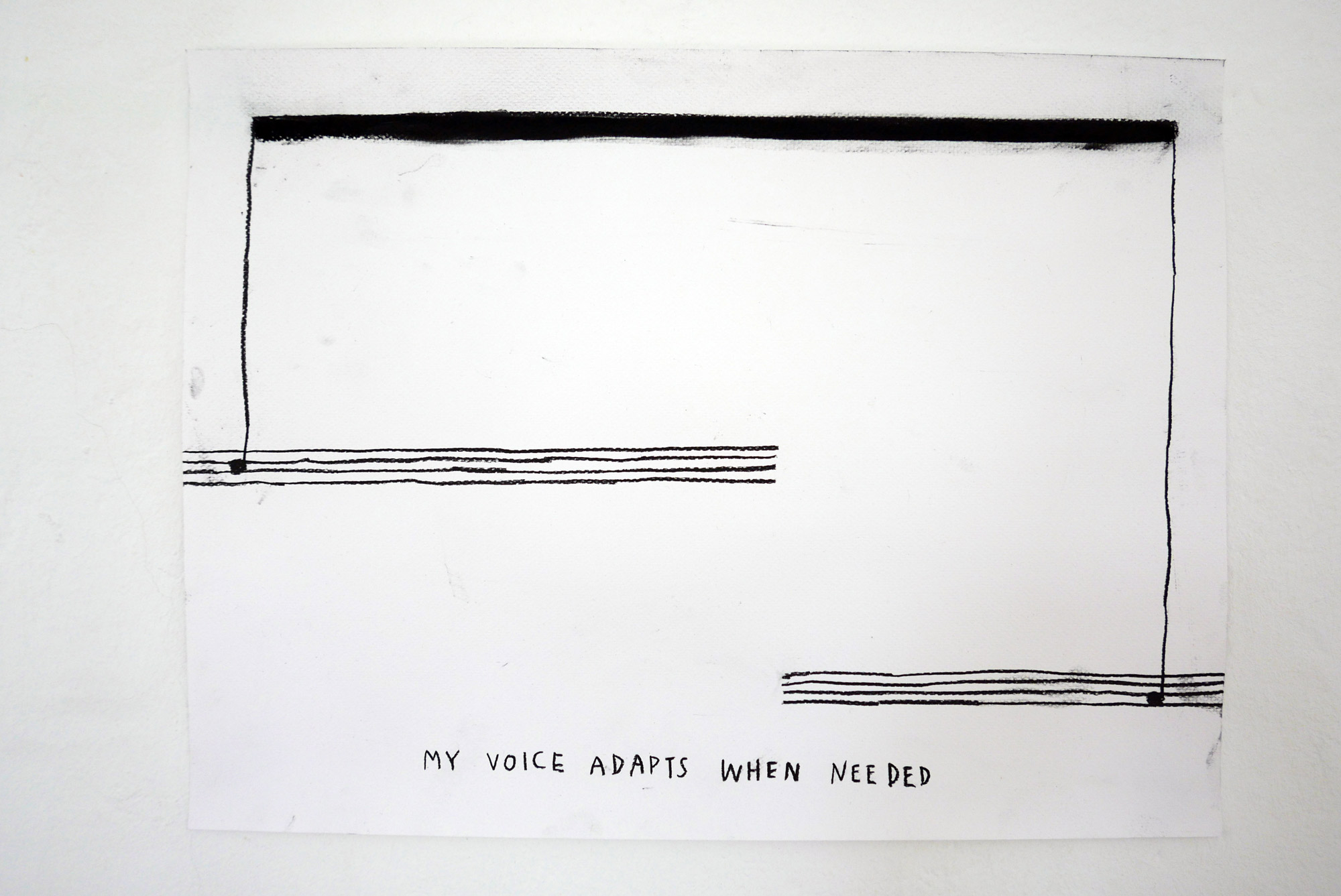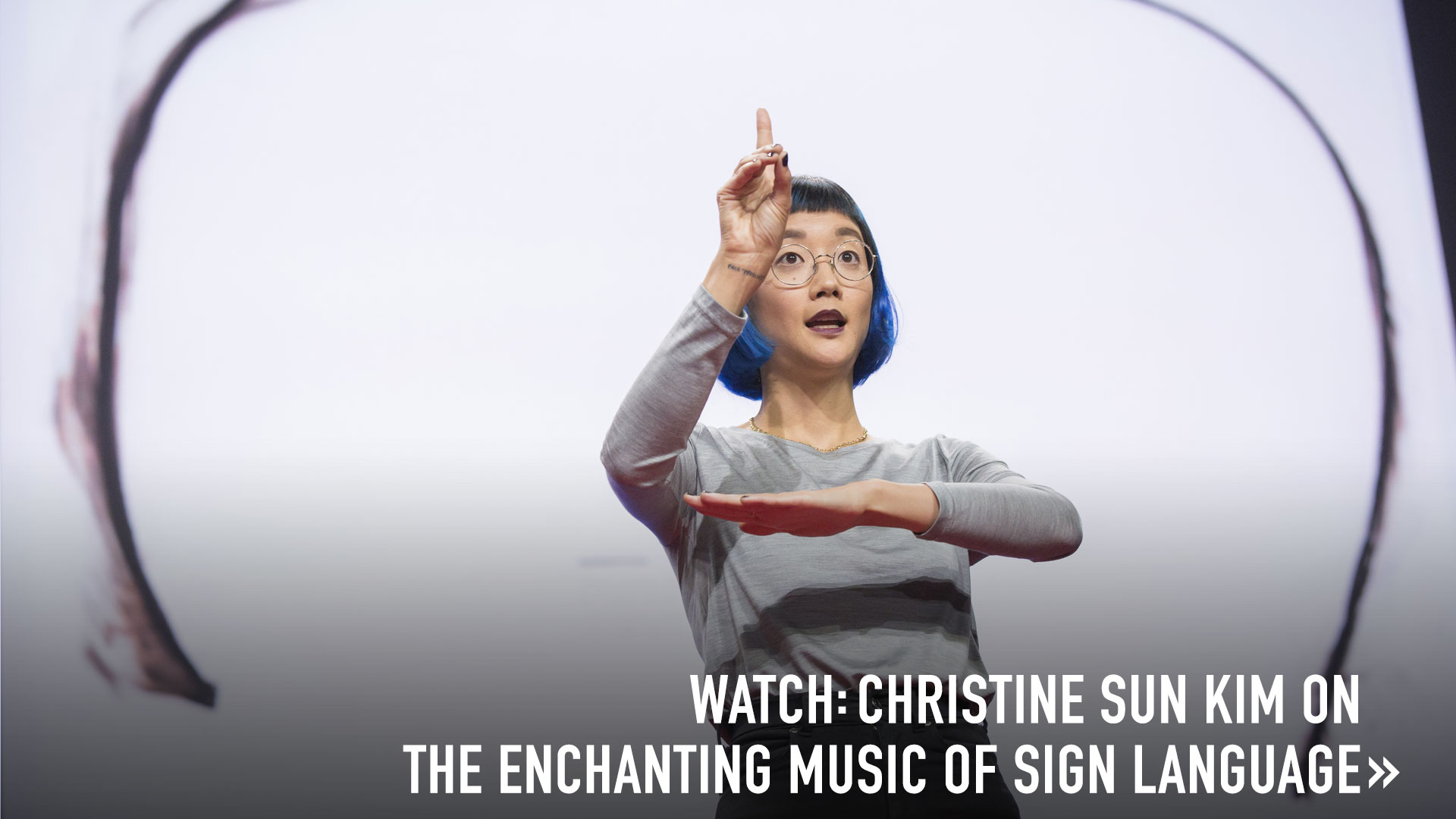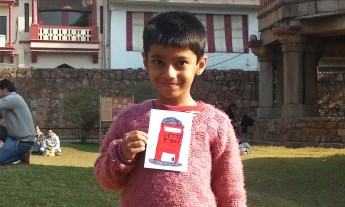Deaf artist Christine Sun Kim describes how she combines American Sign Language and musical notation systems in her drawings.
Several writing systems “code” American Sign Language (ASL) on paper, and some of them function very much like the staffs, symbols and notes of musical notation systems. Both ASL and music are somewhat “closed” — unless you have training, it’s hard to understand either of them. But I chose to combine them in my drawings to convey my ideas and stories. By putting ASL in music format, suddenly language has a voice all of its own. In these drawings, I explore the different voices I have worked with and my experience with sound.
My Voice Acts Like ROYGBIV
I work with a large number of ASL interpreters, and that means my voice comes in different colorful characters. No interpreter is the same, no personality is the same, no voice is the same. I have all different voices for specific situations — a blue voice for fancy talks, a purple voice for social settings, an orange voice for conferences, a red voice for therapy sessions and so on. Putting all my voices together looks like a rainbow … and that would be my ideal voice. I chose not to use the actual colors in this drawing; I think the hand-drawn lines and texts better express my idea.
Pianoiss . . . issmo (Worse Finish)
Although people often associate silence with deafness, when I started employing sound in my art I saw how little I actually knew about silence. That’s when I realized that I could use musical symbols to communicate some of my sensory experiences. “P” is the musical symbol for “piano.” If you see it on a score, you play quietly. If you see two P’s, you play more quietly. The more P’s, the more quietness. But you could never get to the point of complete silence. Silence is an obscure sound. Photo: Erica Leone.
How to Tame Beamed Notes
A beam is the horizontal line that connects notes or divides them into groups in music. I use short or long beamed notes as visual representations of my voices. Working with interpreters takes patience, time and trust; it’s probably the highest form of collaboration. If I’m not careful about my voice, though, it’s very easy for my sonic identity to be misrepresented. Sometimes, I have to tame these notes.
My Voice Thinks It’s a Novel
Interpreting between ASL and English can be extremely abstract, since it’s not transliterate at all. It’s like going from a song to a painting. I’ve experienced a few cases where I’d plainly sign “yes” and an interpreter would say something like, “That is fortunate that things are coming together and I’d love to come. Thank you for the invitation.” She or he can easily make a novel out of one plain “yes.”
One Too Many Voices
When I’m looking for an interpreter, I look at a long list of interpreters to contact. While it’s nice to have so many options, I sometimes get a little overwhelmed.
When My Voice Becomes Complicated
Often it feels like I’m losing my voice to an interpreter whose personality is much bigger than mine. Other times my interpreter and I become connected very well, and I let him or her participate in conversations while interpreting, but sometimes this makes my work relationship or friendship with others complicated. It’s like being married to my interpreter while wanting to be recognized as an individual through her/his voice.
How to Neatly Beam Notes
I try to sound like myself as much as possible through different interpreter voices. For example, if I worked with a shy male interpreter, I would need to ask him to reflect me in a certain way, to use my style and personality and to put his personality aside. It’s a way for me to maintain my voice without compromising too much.
TBD TBC TBA
Since I mirror sound by watching the way people behave and respond to sound, I depend on their feedback. Sometimes I even worry too much about making too much sound (totally unnecessary!). In a way, I perceive sound as full of anxious anticipation: TBD — to be determined; TBC — to be continued; TBA — to be announced. Even though these staffs do not have notes, they mirror them by showing movements and smears.
My Voice Feels Short Sometimes
This is what it feels like when my interpreter and I aren’t a good match.
When My Voice Can’t Shut Up
I’ve had super chatty interpreters, and it can be quite difficult to ask them to start interpreting when someone comes up to me. For example, if my interpreter is in the middle of a conversation and someone comes up to me to have a discussion, I would signal him/her to come over and help, but he/she doesn’t end the other conversation quickly, as we stand by, waiting.
My Voice Adapts When Needed
Working with interpreters is very much a collaboration. Sometimes I need to adapt in order for interpreters to accurately voice me. For example, if one’s receptive skills aren’t great, I would need to sign slowly, finger-spell certain words and move my lips.

